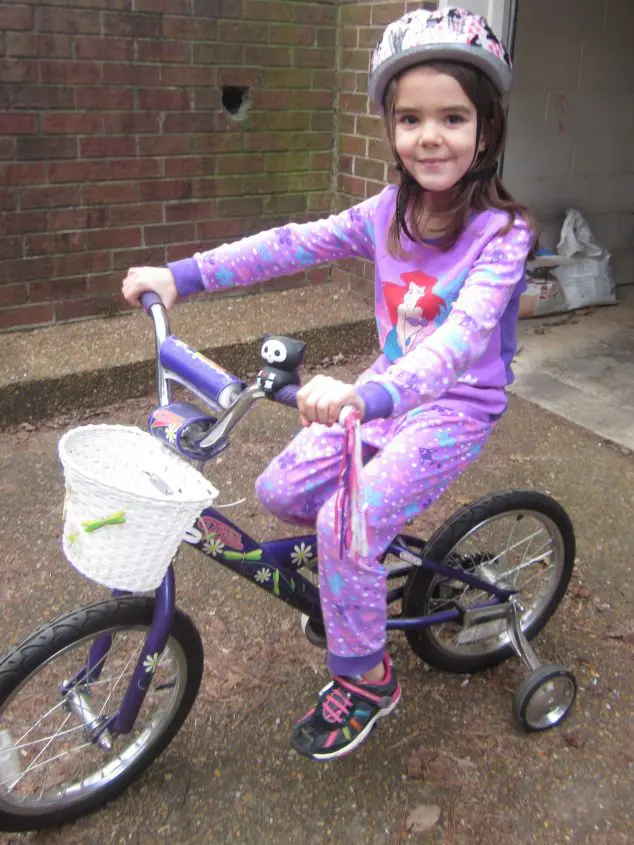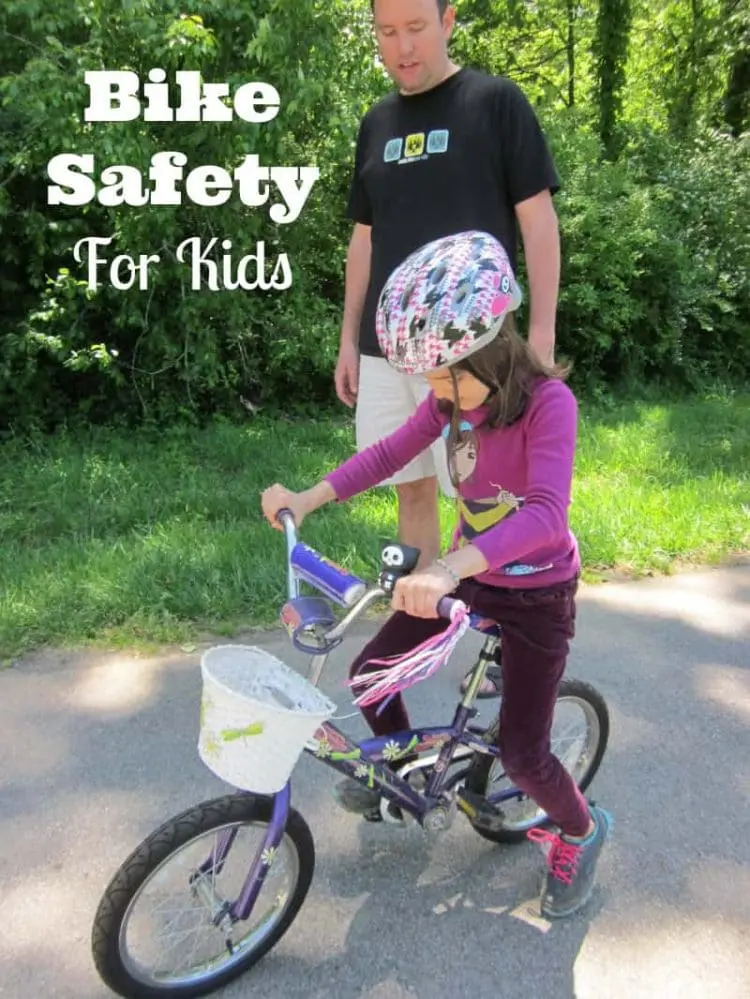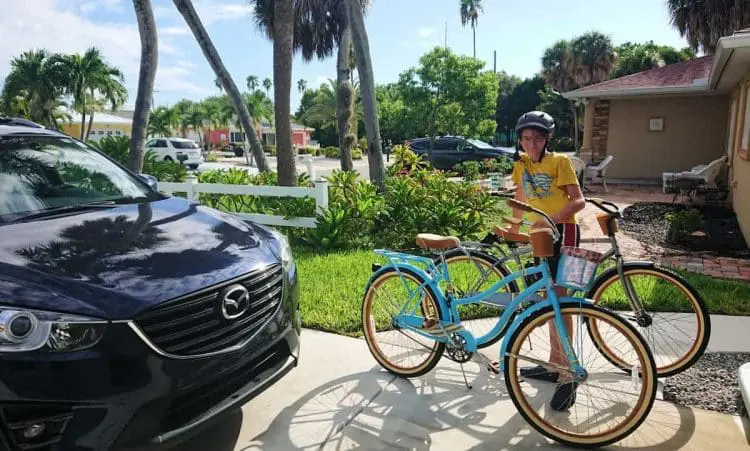Every parent remembers the moment when their child first learns to ride a bike. The excitement in their eyes, the wind in their hair, and the pure joy of being outside and active. But as much fun as biking can be, it’s important to remember that safety always comes first. In this article, we’ll share essential tips for parents to teach their kids about bike safety, from choosing the right helmet to handling accidents and emergencies. Whether your child is just getting started or is already a seasoned biker, these tips will help ensure that they stay safe and enjoy this wonderful activity. So, grab your helmets and let’s hit the road!

Bicycle Safety: Review These 5 Bike Rules With Your Child
When the sun shines, children are more than likely going to be riding bicycles. Whether they pass time rolling over the sidewalks on their street or hug the curbs of their neighborhood in a pack of friends, children love to ride bicycles. Unfortunately, children are also injured and killed in bicycle accidents each year in the United States. The leading cause of death in bicycle accidents is due to traumatic brain injury and the number one way to prevent traumatic brain injury is to wear a bicycle helmet. Here are some tips for bike safety for kids to keep bike riding safe and fun!
Bicycle Helmets Are A Must
One of the most important parts of bike safety is choosing the right helmet and ensuring it fits properly. A bike helmet that doesn’t fit well won’t provide adequate protection in the event of an accident, so it’s crucial to take the time to find the right one. When selecting a helmet, look for one that meets safety standards set by organizations like the Consumer Product Safety Commission (CPSC). A CPSC sticker ensures your child’s helmet meets all the safety requirements in effect.
Children can choose helmets with their favorite movie and television characters, or pick something with vivid colors and designs. Some children’s safety organizations distribute helmets at low to zero cost, check around your community to find help if needed. Remind your child that they must wear the helmet absolutely every time they get on their bicycle, even if they are simply cruising down the driveway. Always set a good example by wearing a bicycle helmet yourself.
Proper Bicycle Helmet Safety Fitting
To make sure the helmet is properly fitted, start by measuring your child’s head circumference. Most helmets come with sizing charts to help you find the right size based on this measurement. Adjust the straps so they’re snug and sit flat against the skin, with the buckle centered under the chin. You should be able to fit no more than two fingers between the strap and your child’s chin. It should fit snugly on your child’s head, with minimal movement when they shake or nod their head. The helmet absorbs the energy of impact, so it is essential to confirm a safe fit for your child.
Remember, wearing a helmet isn’t just a recommendation – it’s the law in many places and can help prevent serious injuries.

Bike Chain Safety
Remind children that anything hanging down, such as backpack straps, shoe laces, or loose skirts, can get snarled in the bicycle chain and cause an injury. Keep everything away from the bike chain.
Road Safety: Traffic Rules And Hand Signals
Children love to bike ride with their family. This is a great opportunity to model safety habits for your child. Everyone should secure helmets before your family adventure begins. If your child will be on any main roads, provide bike safety gear like bright or reflective clothing (affiliate link).
Now that your child is properly geared up, it’s important to focus on teaching them traffic rules and hand signals. First and foremost, they should understand that they are required to follow the same rules of the road that cars and other motor vehicles do. This means they should ride on the right-hand side of the road, and come to a complete stop at each stop sign and red light. Bikers need to go in a straight line with the direction of traffic and follow all traffic signs and lane markings.
In addition, your child should be familiar with basic hand signals. This will help them communicate with other riders and drivers on the road, which is essential for staying safe. Teach your child how to signal a left or right turn, and the universal signal for stopping. Model how to look and listen at crosswalks, as well as walking bicycles across major crosswalks. This little video may be helpful to you:
Explain to kids that bikers should call out to pedestrians on bike trails, “On the left,” as they approach so walkers don’t accidentally get in their way at the last moment.
Staying alert and paying attention while biking is an important skill. By ensuring that your child is knowledgeable about traffic rules and hand signals, you can help them become a responsible and confident bike rider. The next step is to prepare them for different biking situations, such as biking on busy roads or in inclement weather.
Be Prepared For Different Situations
Once your child has a good understanding of traffic rules and hand signals, it’s important to prepare them for different biking situations. Riding on a quiet residential street is very different from navigating through a busy downtown intersection or riding in heavy rain or snow.
When it comes to biking on busy roads, make sure your child knows to stay in the designated bike lane or to ride as close to the right-hand side of the road as possible if there is no bike lane available. They should also be aware of cars in their vicinity and be cautious when turning or changing lanes.
In inclement weather, it’s important to ensure that your child has the appropriate clothing and equipment. This includes a waterproof jacket, pants, and gloves, as well as lights for their bike and reflective gear. Teach your bike rider to go slower and to be extra cautious in wet or icy conditions.
While accidents and emergencies are not something anyone wants to think about, they are a possibility when biking. In the next section, we’ll discuss how to prepare for and handle these situations.
How To Deal with Accidents and Emergencies
It’s always better to be safe than sorry, especially when it comes to your child’s safety. While we hope that accidents won’t happen, it’s important to be prepared for them. As a parent, it’s your responsibility to teach your child what to do in case of an emergency.
First and foremost, teach your child to always wear a properly fitted helmet when biking. A helmet can greatly reduce the risk of head injuries and could even save their life in the event of an accident. Make sure they understand that wearing a helmet is non-negotiable and that it should fit their head snugly.
Next, teach your child to be aware of their surroundings at all times. This means checking for cars and pedestrians before crossing the street and keeping an eye out for potential hazards on the road. Encourage them to use hand signals when turning or stopping, and to be vocal if they see something that could be dangerous.
In the event that your child does get into an accident, teach them to stay calm and assess the situation. If they’re injured, they should call for help immediately. Make sure they know your phone number and address, as well as emergency numbers like 911. Additionally, teach them basic first aid skills like how to stop bleeding or treat a minor cut. If your child is older and they’re able to do so safely, remind them to get evidence of the accident scene, especially if they’re involved in a collision. This can be helpful if you need to contact a Personal Injury Lawyer about their accident, for example, if they’re in an auto accident or uneven pavement was the cause of the injury. By teaching your child bike safety and how to handle emergencies, you’ll help them stay safe and confident while biking.

Conclusion
Prioritizing bike safety is essential for ensuring a safe and enjoyable cycling experience for riders of all ages. By adhering to traffic laws, wearing appropriate protective gear such as helmets, and staying alert to surroundings, cyclists can significantly reduce the risk of accidents. Promoting bike safety also involves fostering a culture of awareness and mutual respect between cyclists and motorists. With these precautions in place, biking remains a healthy, eco-friendly, and empowering mode of transportation for everyone.
As a parent, it’s natural to want your kids to enjoy a fun and active childhood. However, safety should always be a top concern, especially when it comes to biking. In this article, we’ve shared some essential tips for teaching your kids bike safety, from choosing the right helmet to dealing with emergencies. By following these strategies and leading by example, you can help your children become confident and safe bikers. Following bike safety for kids, observing bicycle road safety tips, and always wearing a bicycle helmet, will greatly reduce the chance of injury in bicycle accidents. So, get outside, enjoy the fresh air, and remember to always prioritize safety first. Which of these bike safety tips did you find most helpful?
Related Posts:

Lauri says
The League of American Bicyclists emphasizes the importance of biking on the right side of the road and using lights, such as a white headlight, to increase visibility. Cyclists should wear bright colors to stand out and make eye contact with drivers, especially when making maneuvers like a left turn. In the event of a crash, organizations like Safe Kids recommend always prioritizing proper safety gear, such as helmets, to reduce injuries. Following these practices helps create safer roadways for all users. Bike helmets will help prevent brain injuries in case of a crash. It’s important to get this information across to our children at a young age. Thanks for putting the information out there.